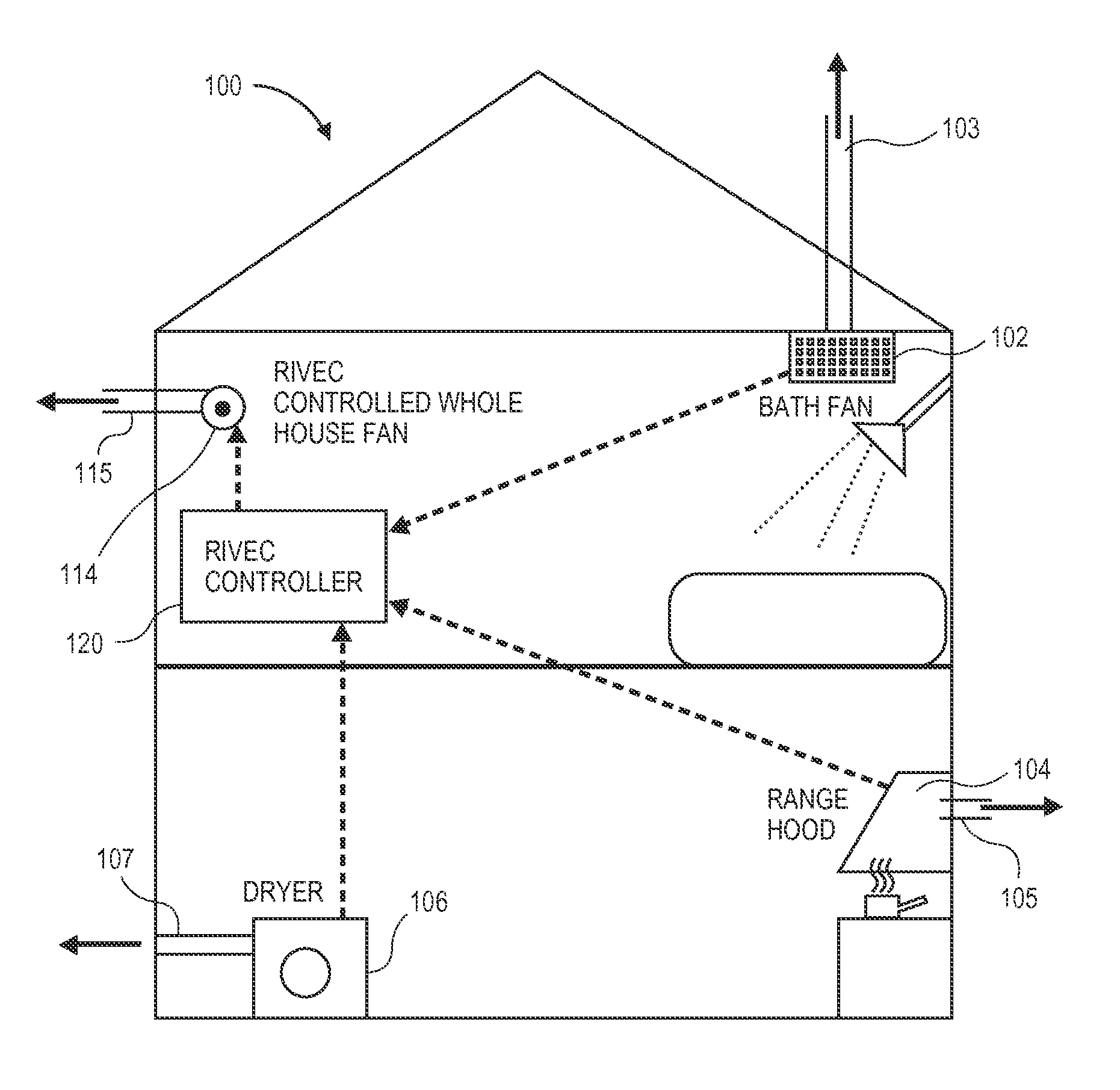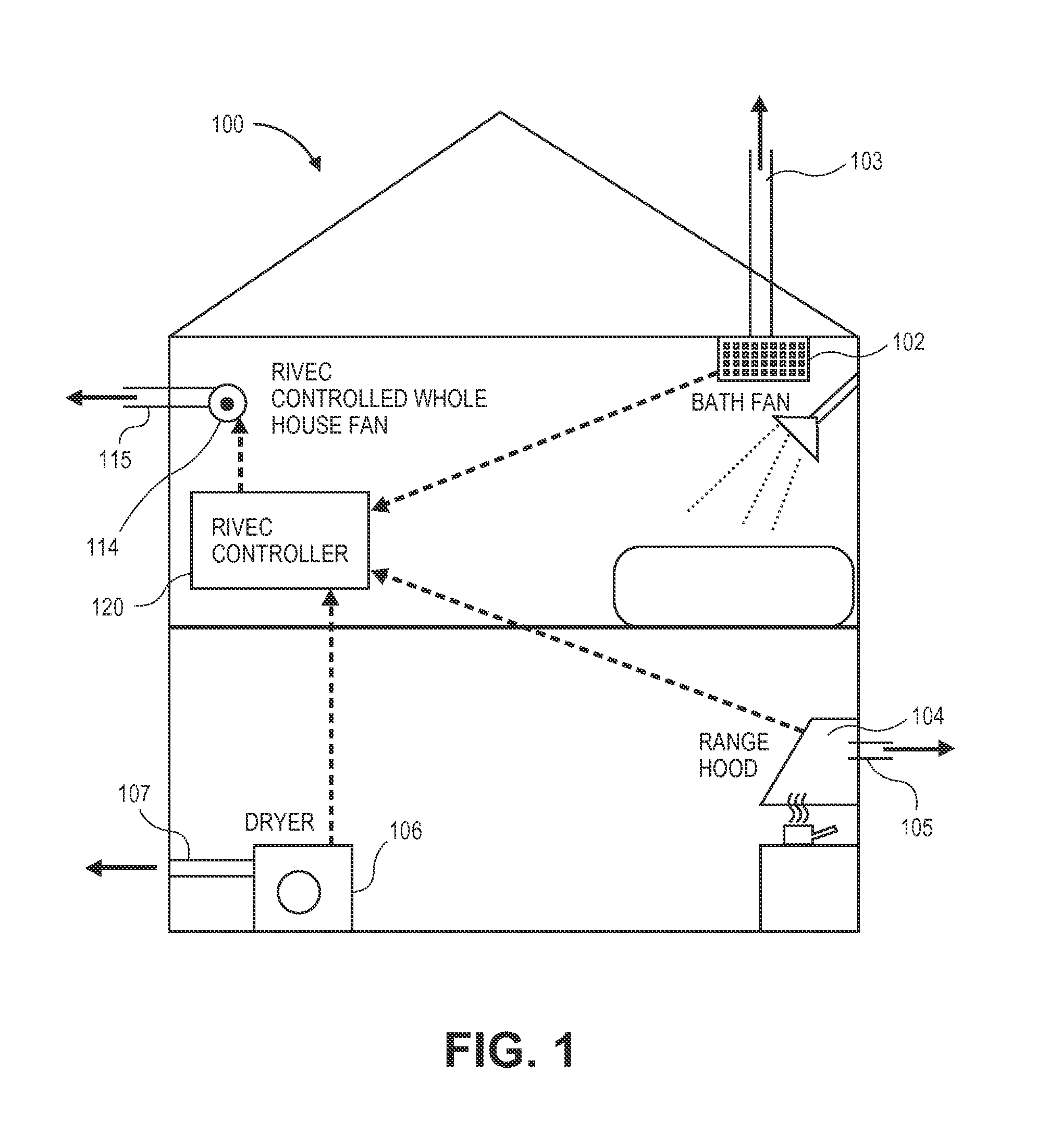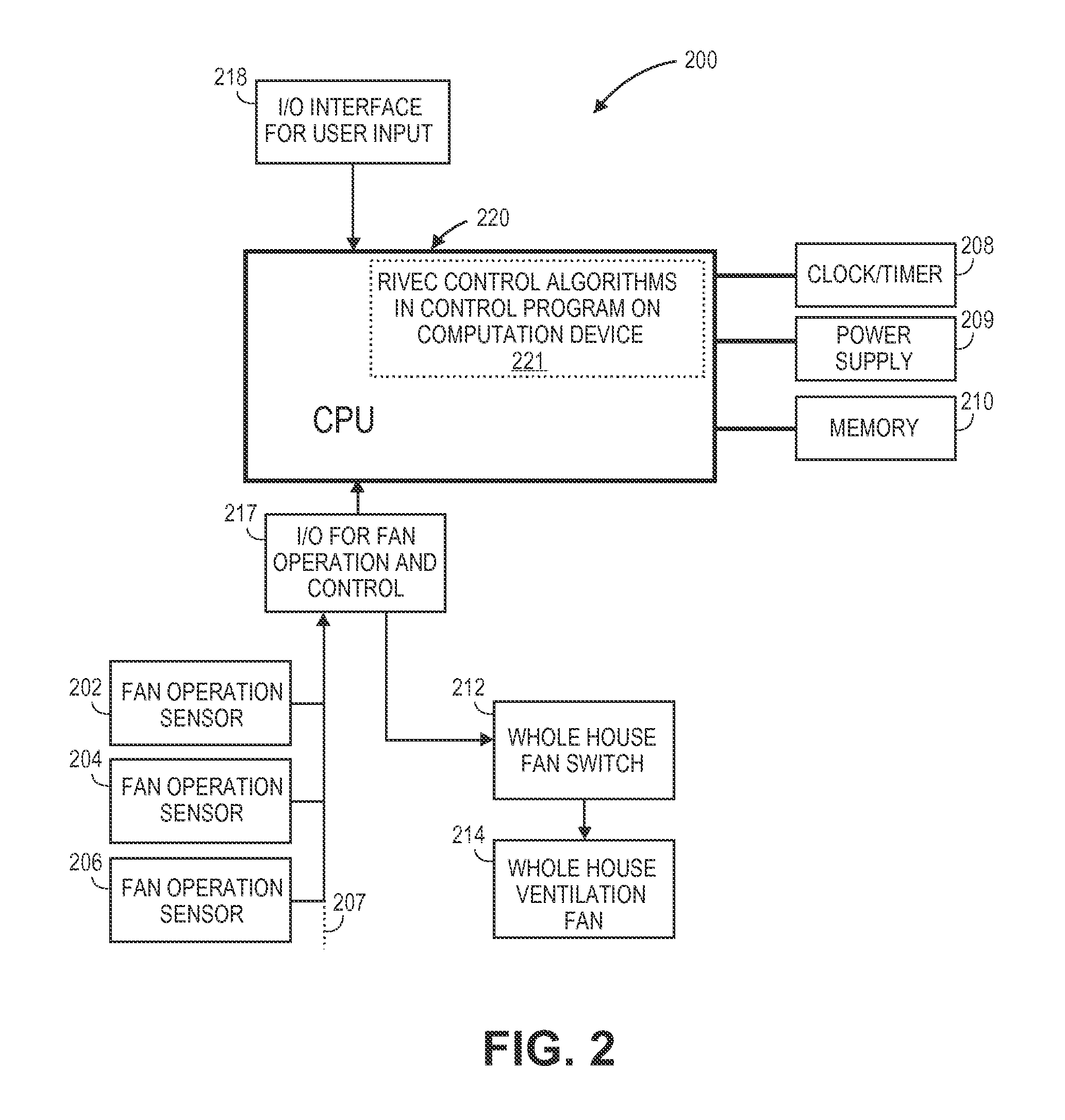Residential integrated ventilation energy controller
a technology of integrated ventilation and energy controller, which is applied in the direction of ventilation systems, lighting and heating apparatus, heating types, etc., can solve the problems of contaminant build-up within the house that can quickly become unacceptable, the integrated approach to looking at residential indoor air quality is usually lacking, and the indoor air quality is complex, so as to reduce energy and peak power, and effectively maintain the home air quality
- Summary
- Abstract
- Description
- Claims
- Application Information
AI Technical Summary
Benefits of technology
Problems solved by technology
Method used
Image
Examples
Embodiment Construction
[0021]New homes in some jurisdictions are required to meet the ASHRAE Standard on residential ventilation (62.2-2007). This standard specifies minimum continuous mechanical ventilation rates. While it does not specifically address the issues of source control or ventilation load shifting, it does allow alternative approaches to be used if they can be shown to provide equivalent performance.
[0022]Existing building stock is substantially leakier than typical new construction. Despite the natural and increasingly legal incentives to control energy costs, a key barrier to improved envelope air tightness is the real concern that indoor air quality will be compromised. Unlike new construction, existing homes have no mandate to meet any ventilation or indoor air quality standard. Thus, if air tightness is to be improved, provision at the same time needs to be made for maintenance of indoor air quality.
[0023]To address this indoor air quality issue, a low cost, energy efficient home ventila...
PUM
 Login to View More
Login to View More Abstract
Description
Claims
Application Information
 Login to View More
Login to View More - R&D
- Intellectual Property
- Life Sciences
- Materials
- Tech Scout
- Unparalleled Data Quality
- Higher Quality Content
- 60% Fewer Hallucinations
Browse by: Latest US Patents, China's latest patents, Technical Efficacy Thesaurus, Application Domain, Technology Topic, Popular Technical Reports.
© 2025 PatSnap. All rights reserved.Legal|Privacy policy|Modern Slavery Act Transparency Statement|Sitemap|About US| Contact US: help@patsnap.com



